Imagine a world where every home is a model of energy efficiency, starting with the simple act of switching to LED lighting. Our “Residential LED Lighting Ultimate Guide: Sustainable Illumination Solutions” is here to show you how this vision can become a reality. But why is it that so many homeowners hesitate to make the switch?
One common misconception is that LED lighting is prohibitively expensive or difficult to implement. Many people are unaware of the long-term savings and environmental benefits that far outweigh the initial investment. This guide aims to dispel these myths and provide a clear path to sustainable illumination.
The benefits of LED lighting are numerous: reduced energy consumption, lower utility bills, and a smaller carbon footprint, to name a few. Moreover, LED lights offer superior longevity and versatility, making them an ideal choice for any residential setting.
In this comprehensive guide, we will cover everything from the basics of LED technology to practical tips for choosing the right lighting solutions for your home. We will also explore the latest trends and innovations in the field, ensuring you are well-equipped to make informed decisions.
Ready to transform your home and contribute to a sustainable future? Dive into our guide and discover how LED lighting can illuminate your life in more ways than one.
Understanding LED Lighting
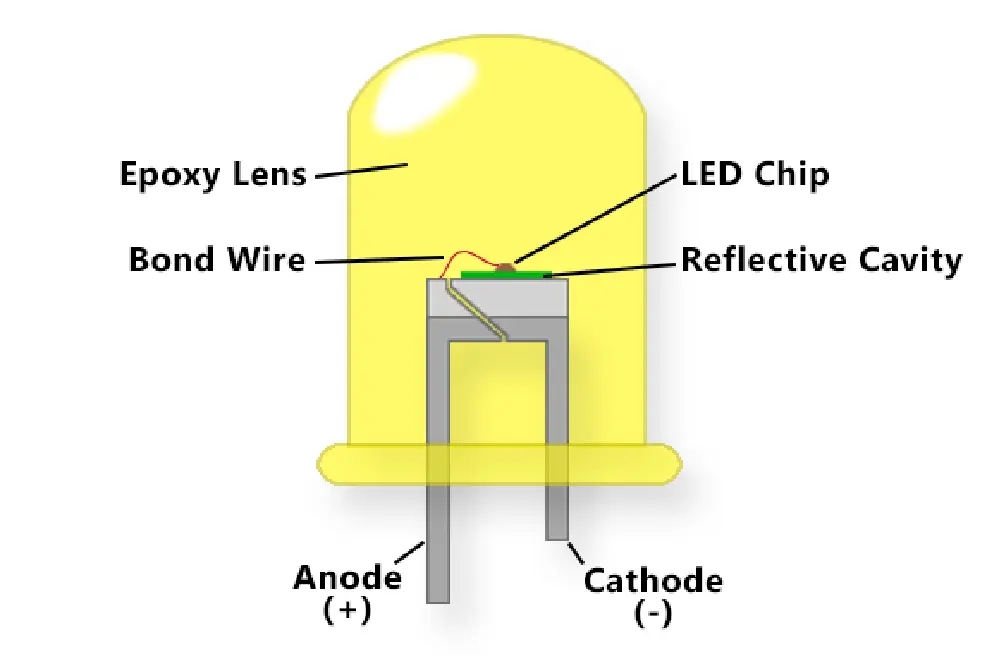
LED lighting, an acronym for Light Emitting Diode, holds the promise of redefining how we illuminate our spaces, ensuring both efficiency and sustainability.
Harnessing the power of semiconductors, LEDs produce light when electricity flows through them.
This phenomenon underpins the impressive ability of LEDs to convert electricity into light efficiently, achieving warmth and brightness comparable to traditional bulbs. Their reduced energy consumption, longevity, and versatility provide an exciting frontier in residential illumination technology.
In addition, LED technology minimization of heat output stands as a testament to their ingenuity, enabling vast applications across diverse climatic conditions. Consequently, their adaptability positions LEDs as a “front-runner” in revolutionizing home lighting landscapes. Whether orchestrating ambiance or accentuating decor, LEDs signify a dawn of innovation that champions both sustainability and style.
Benefits of LED Lights
The innovative prowess of LED lighting underscores its transformative impact on residential settings worldwide.
Firstly, LED lights are celebrated for their exceptional energy efficiency and longevity, which translate into substantial cost savings and reduced environmental footprints. These lights consume significantly less electricity than traditional bulbs and last up to 25 times longer, mitigating the frequency of replacements and landfill contributions. This dual advantage bolsters both economic and ecological sustainability, aligning home lighting choices with conscientious living principles.
Additionally, LED lights offer a versatile range of applications throughout the home. From ambient living room settings to concentrated kitchen illumination, the endless design possibilities offered by LEDs provide homeowners with unprecedented flexibility in creating inviting and functional spaces.
Moreover, the sophisticated technology inherent in LEDs enables unmatched precision in light color and intensity control, enhancing both comfort and aesthetic integration within any architectural style. By embracing forward-thinking LED solutions, households not only elevate the quality of their living environments but also play a crucial role in advancing the global shift towards greener, more responsible energy consumption practices.
Comparing LED vs. Traditional Lighting
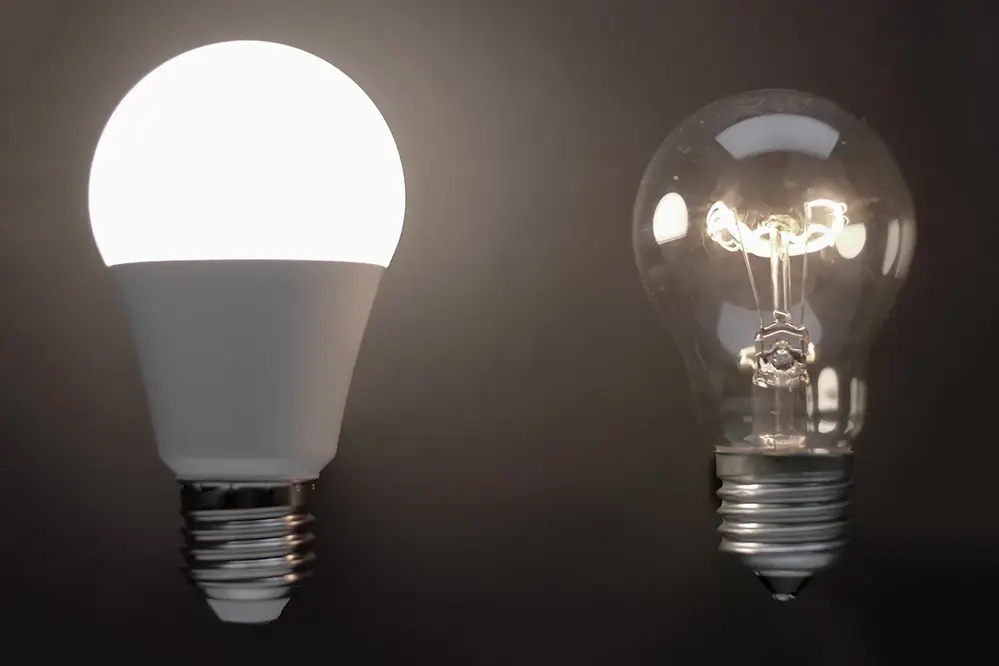
The world of residential lighting has undergone a remarkable transformation over recent years, with LED technologies taking center stage.
Traditional incandescent bulbs, while once ubiquitous, have significant drawbacks in cost efficiency.
LEDs boast unparalleled energy savings and longevity, operating at a fraction of traditional bulbs’ energy usage while lasting significantly longer. Additionally, LEDs offer potential integrations with smart home systems, revolutionizing lighting control and customization, elevating household efficiency.
By investing in LEDs, homeowners can not only reduce their energy bills but also contribute significantly to environmental conservation. As we collectively lean towards sustainable practices, choosing LEDs can be a crucial step in fostering positive change, harnessing the power of innovative solutions.
Choosing the Right LED Lights
Choosing the right LED lights requires a balance of efficiency, aesthetic appeal, and functionality, ensuring they align with your home’s needs. Evaluate factors like color temperature, brightness levels, and compatibility with smart systems to find the ideal solution that not only illuminates your space beautifully but also enhances energy conservation.
Lumens and Brightness
Understanding lumens and brightness—the essentials—guides discerning homeowners in maximizing the transformative power of residential LED lighting.
A single lumen equates to the light cast by one candle, establishing a tangible brightness benchmark.
Efficient LED lighting surpasses traditional bulbs by delivering higher brightness per watt. It optimizes illumination quality, ensuring every space is not only well-lit but also energy-efficient.
Relying on lumens as a primary metric allows for precision in lighting choices, reflecting a commitment to fostering an inviting and sustainable home ambiance.
Color Temperature Options
Exploring the spectrum of color temperatures with LED lighting opens avenues for personalized ambiance, ensuring each room radiates its intended mood.
A wide range from warm whites to cool blues offers flexibility.
A warmer hue at 2700K is akin to traditional incandescent lighting, casting a cozy, inviting atmosphere. In contrast, cooler temperatures, around 5000K, simulate daylight, stimulating productivity and enhancing focus.
The thoughtful selection of color temperature can transform not only the look but also the feel of a home, catering to varying functional requirements of different spaces. For instance, selecting the right “temperature” for kitchens and bathrooms can significantly influence how these spaces perform.
Energy Efficiency Ratings
Understanding energy efficiency ratings is crucial to optimizing the performance of LED lighting within a residential setting.
- Energy Star Certification: This indicates products that meet strict standards in energy savings and environmental protection.
- Lumens Per Watt (LPW): A higher LPW denotes greater efficiency, offering more light output for lesser energy consumption.
- European Energy Label: Often rated from A to G, with A being the most efficient, this system helps identify energy-saving lights.
- Lighting Facts Label: Provides essential data on lumens, wattage, and lifespan, aiding informed consumer purchases.
Evaluating these ratings empowers homeowners to choose lighting solutions that reduce energy bills and carbon footprints.
The integration of energy-efficient LEDs not only enhances sustainability but also offers long-term financial savings and superior lighting quality.
Installation of Residential LED Lighting
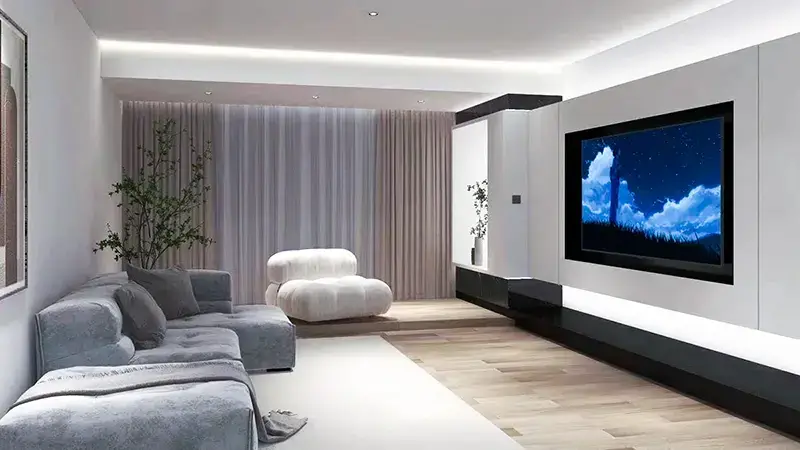
Embracing LED lighting in a residential setting requires a thoughtful approach to installation, ensuring optimal performance and longevity.
Considerations must begin with a comprehensive assessment of the existing lighting infrastructure to determine compatibility for retrofit options. This step is paramount for a seamless transition from traditional lighting systems to LED solutions. Understanding the intricacies of your electrical layout can significantly enhance the efficiency of the installation process.
With meticulous planning, choose the right LED products tailored to each room’s unique requirements. Achieve ambient, task, or accent lighting by selecting varying lumens and color temperatures, ensuring every space meets its intended purpose and mood. This strategic selection is a cornerstone of the residential LED lighting ultimate guide.
Should installation appear daunting, bringing in professional installers can expedite the process, ensuring proper wiring and safe practices. They can provide invaluable insights and validate that every LED fixture is installed to its manufacturer’s specifications, maximizing its potential and your investment’s value.
Ultimately, a well-planned installation can seamlessly blend aesthetics and functionality, transforming your home into an oasis of sustainable illumination.
Maintenance Tips for LED Lights
The effectiveness of LED lighting endures largely due to simple, regular maintenance practices. Adopting these strategies, you can prolong the lifespan of your LED installations while simultaneously maintaining optimum efficiency.
Commence by periodically wiping your LED lights with a soft, dry cloth to prevent dust accumulation.
Occasionally, examine electrical connections to ensure continuity and prevent potential issues (disruptions could affect longevity).
Replace faulty drivers and dimming controls with compatible, high-quality parts to prevent flickering and ensure consistent light output.
Furthermore, avoid overexerting your LEDs by turning them off when not in use, ensuring these eco-friendly luminaires fulfill their energy-saving promise and maximize their lifetime.
Finally, adhere to your LED light’s manual for specific care. Properly executed, maintenance tasks can deliver long-term illumination success.
Common Mistakes with LED Lighting
Selecting the wrong LED bulb for its intended space is a prevalent mistake rooted in misunderstanding the necessary specifications. This can result in unsatisfying light quality and efficiency, which may lead many to mistakenly blame the technology itself.
Oftentimes, users might neglect vital installation instructions, leading to improperly placed lighting.
Many fail to recognize the importance of matching LED lights with compatible dimmer switches. This oversight can cause annoying flickering, inefficiencies, and a reduction in the lifespan of your LEDs, overshadowing their otherwise excellent performance.
Moreover, some underestimate the aesthetic variability LED lights offer, sticking to a single option without considering the broad spectrum of available color temperatures and beam angles. A lack of thoughtful selection often results in a lighting ambiance that fails to complement the space, underscoring the necessity to explore LED features fully and creatively. Hence, exploring and leveraging LED versatility ensures your environment shines at its finest.
Smart LED Lighting Solutions
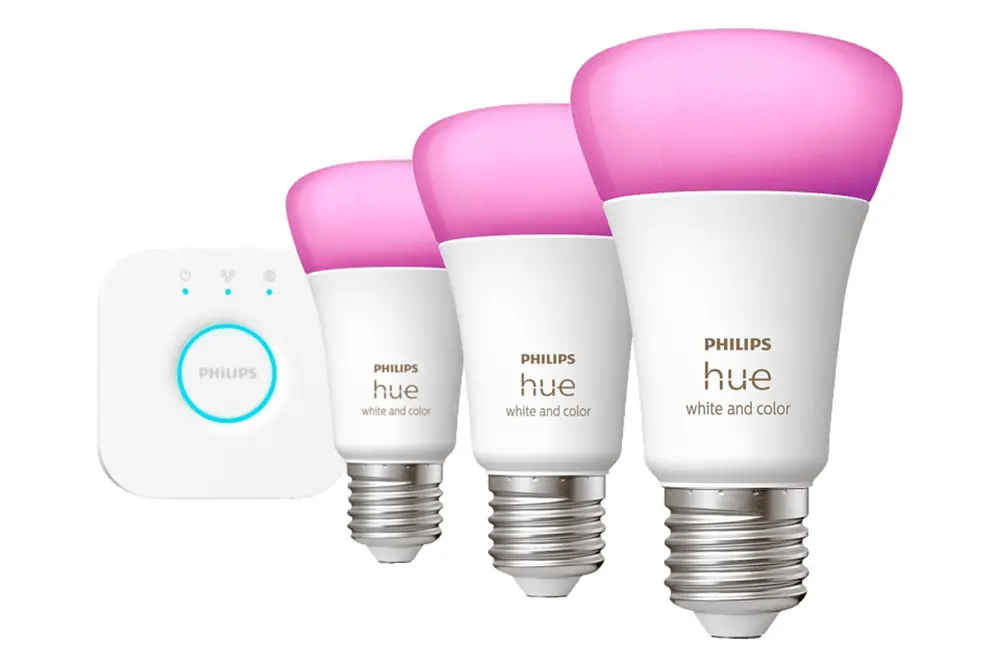
Smart LED lighting solutions herald a new era, marrying the efficiency of LEDs with the brilliance of modern technology.
By integrating LEDs with smart technology, you can create a responsive lighting ecosystem that adapts to your needs. With smart LED lighting, users enjoy the advantage of remote control and automation, facilitating a convenient and energy-efficient experience. Imagine lights that dim or change hues based on your mood or schedule, optimizing comfort while also ensuring energy conservation.
Unquestionably, smart lighting adds a layer of personalization to daily living. Through smart devices and applications, residents have the power to tailor their illumination settings with unparalleled precision and creativity. Whether adjusting for a cozy dinner or a lively gathering, you can effortlessly set the perfect environment.
Additionally, smart lighting systems can extend their capabilities beyond mere illumination to integrate seamlessly with other smart home solutions. This holistic approach to residential LED lighting not only maximizes energy efficiency but also elevates your living space into a dynamic, interconnected home ecosystem. Embrace this future of intelligent, sustainable lighting and transform your residence into an exemplar of modern innovation.
Cost-Saving Strategies with LEDs
Harnessing the power of LED lighting in residential settings offers substantial financial advantages, reducing both energy consumption and maintenance costs. By shifting to LED systems, homeowners can experience a significant decrease in energy bills.
Seize opportunities available through utility rebates and federal tax incentives. Such incentives are often offered to encourage the adoption of energy-efficient lighting solutions.
Moreover, selecting LEDs with smart technology, which allows for automated adjustments (such as motion-sensor operations or dimming), can amplify savings. Integrating these technologies further minimizes unnecessary electricity use.
Consider utilizing smaller fixtures or lower wattage bulbs in lesser-used spaces. Maximizing efficient lighting in strategic areas enhances overall energy savings.
Residential LED lighting not only calls for minimal replacements due to their longer lifespan but also promotes significant financial resilience, ensuring benefits extend well into the future. Investing in LED solutions now empowers homeowners to capitalize on their durable efficiency.
Ultimately, the vision for cost efficiency isn’t solely about reducing expenses today. Thoughtfully paced transformations create ecosystems wherein fiscal prudence and sustainable practices thrive harmoniously.
Environmental Impact of LED Lighting
LED lighting represents a transformative shift, minimizing the ecological footprint of homes and communities through sustainable choices.
To begin, the environmental impact of LED lighting is profound. Unlike fluorescent lamps, LEDs are free from toxic elements like mercury, thereby eliminating hazardous waste from the ecosystem. Additionally, their long lifespan means fewer resources are consumed in production and disposal, leading to less landfill pollution. These factors collectively illustrate how LEDs empower a healthier planet.
Furthermore, using LEDs in residential settings can significantly reduce energy usage. As they consume up to 80% less energy than traditional incandescent and halogen lamps, they are pivotal in cutting down greenhouse gas emissions. More efficient energy use means fewer carbon emissions, dramatically benefiting ecological balance.
In summary, the environmental advantages of LEDs demonstrate how innovative lighting solutions are vital for sustainable and resilient futures. By adopting LED technology, homeowners contribute to reducing resource depletion while embracing energy efficiency, protecting our planet for future generations. This seamless integration of advanced technology with environmental stewardship highlights the imperative for LED adoption worldwide.
Residential LED Lighting Design Ideas
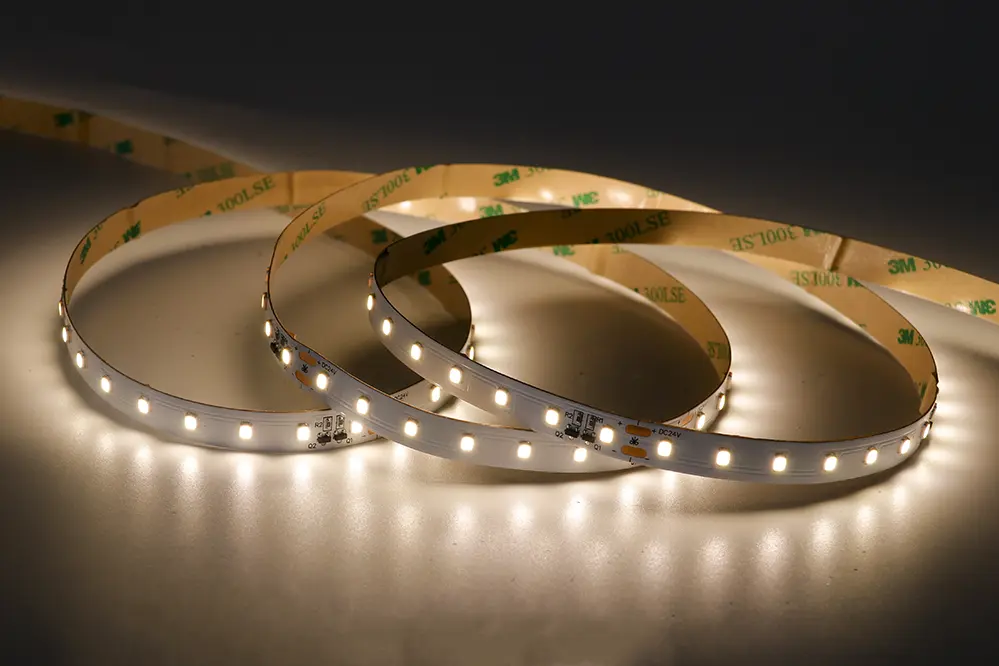
Imagine transforming your home into a serene oasis with the warmth and versatility of LED lighting. How might your spaces breathe new life with innovative design techniques?
A few years ago, homeowners began gravitating towards fully integrated lighting solutions, shifting away from traditional plug-and-play models. This trend has progressed to creating environments that respond to varying moods and activities, where carefully placed lights serve both functional and aesthetic purposes.
Now, it’s possible to craft living spaces with lighting that accentuates their best features, invoking a symphony of style and utility. By using different fixtures, such as recessed lights and pendant luminaires, varied illumination becomes achievable, allowing each room to exude its unique charm effortlessly.
Highlight the elegance of your home by combining ambient LED strips along ceilings with task lighting over counters in the kitchen. Accent features such as art pieces with strategically hidden wall lights to enhance their visual impact, further enriching your living space’s atmosphere.
Integrating LEDs into your design offers a world of creative possibilities, providing effective solutions for modern and dynamic homes.
Future Trends in LED Lighting
The future of LED technology shines brightly, with a focus on innovation and efficiency paving the way forward.
Emerging trends in residential LED lighting include a seamless integration with smart home ecosystems, allowing homeowners to adjust lighting conditions through voice control or smartphone apps. This advancement is expected to enhance convenience and energy savings, as adaptive lighting systems learn and respond to users’ patterns and preferences, creating personalized and efficient lighting environments.
Additionally, there will be a growing emphasis on human-centric lighting design. By emulating natural light cycles, these systems aim to support well-being and productivity in everyday life, marrying the modernist approach with nature’s timeless influence.
Furthermore, as sustainability continues to be a driving force, expect advances in eco-friendly technologies such as circular design principles and improved recyclability. LED improvements will likely include better material reuse and decreased environmental impact, positioning LED lighting as a leader in sustainable residential solutions, reflecting a conscious commitment to a greener future.
Troubleshooting LED Lighting Issues
When it comes to troubleshooting LED lighting issues, identifying the root cause of common problems can often be straightforward, and some quick fixes can be effective.
First, ensure your LED bulbs are securely connected and compatible with your fixtures.
Ruling out wiring issues is crucial; sometimes flickering is the result of a loose or incompatible dimmer switch. Try swapping out switches or double-checking connections to avoid flickers, dimming, and premature burnout.
LEDs are designed to last, but if you encounter persistent issues, consider consulting with a professional for a comprehensive diagnosis. It’s worth noting that factors such as “ghosting” are sometimes caused by specific circuit conditions, and an assessment can illuminate any underlying complexities. Be proactive, knowledgeable, and don’t hesitate to “shed light” on potential solutions.
Frequently Asked Questions on LEDs
How to choose LED lighting for homes?
Selecting LED lighting for your home involves balancing energy efficiency, aesthetic appeal, and functional brilliance. Begin by assessing the specific lighting needs of each space. Consider the activities taking place in each room and tailor your lighting to complement these tasks seamlessly, achieving a splendid harmony of design and utility.
Keep in mind the color temperature options available to you. Cool white lights are ideal for kitchens, providing a crisp ambiance that enhances visibility. Meanwhile, warmer tones work best in living rooms and bedrooms, fostering relaxation and comfort.
It’s crucial to evaluate the lumen output rather than just the wattage; lumens measure brightness, helping you understand how much light the bulb will emit. This ensures you’re not just saving on energy costs but also achieving the desired illumination level.
Opt for LED bulbs with a high Color Rendering Index (CRI) to ensure vibrant and true colors. CRI is an often-overlooked detail that profoundly impacts the quality of light, making colors appear more natural and inviting.
Remember, sustainability and innovation go hand in hand. Choose LED products that carry ENERGY STAR certification, signaling advanced efficiency and ecological responsibility. Such choices not only minimize environmental impact but also offer long-term savings.
Embarking on your residential LED lighting journey should be an empowering experience. Select wisely to transform your home into a sanctuary of light, optimizing every space with futuristic elegance and sustainable brilliance.
Why switch to LED residential lighting?
In a world increasingly conscious of sustainability, LED lighting emerges as a beacon of efficiency and innovation. Renowned for its unparalleled energy-saving capabilities, LEDs significantly reduce electricity usage, allowing homeowners to enjoy brilliant illumination while being environmentally responsible.
Pioneering advancements in LED technology have revolutionized residential lighting, offering versatility and adaptability to suit every taste and architectural style. Unlike traditional incandescent or fluorescent lights, LEDs are available in a diversity of color temperatures, from warm whites to vibrant hues, creating the perfect ambiance for any occasion.
Cost-effectiveness is another compelling reason for switching to LEDs. Over their extended lifespan, these lights demand remarkably less maintenance and replacements, translating into substantial savings. This durability is a testament to their superior design, ensuring that once installed, LED bulbs serve faithfully for years without losing their luminous intensity.
Moreover, embracing LED lighting solutions contributes to a healthier indoor environment. Free from harmful chemicals and designed to emit no ultraviolet light, LEDs enhance living spaces by minimizing potential health risks and safeguarding the well-being of your household.
Ultimately, by choosing LED lighting, you are investing not only in the present quality of your home but also in a sustainable future. This forward-thinking decision ensures long-term benefits for both your wallet and our planet.
Where to place LED lights indoors?
Harnessing the transformative potential of LED lights indoors demands thoughtful planning and strategic placement. In residential spaces, LED lights should highlight architectural features, creating an ambiance that is both inviting and functional. Their versatility allows for customization, making every room a reflection of personal style.
Focus on key areas that benefit most from accent and task lighting. The kitchen, a hub of activity, benefits from under-cabinet LEDs to improve task visibility while cooking or preparing meals.
In living rooms, LED strips can complement existing light fixtures by providing soft illumination. This enhances the mood without overwhelming the space, allowing for relaxation or entertainment.
Bedrooms, a sanctuary for rest, gain elegance and warmth from discreet LED placements. Consider using them behind headboards or below furniture for a subtle, yet sophisticated lighting effect.
Bathrooms require precision lighting, ensuring safety and efficacy. Here, mirror and ceiling LEDs create an ideal environment for grooming while maintaining an invigorating atmosphere.
Ultimately, the success of indoor LED lighting lies in finding balance. Blending innovative technology with aesthetic intentions, homeowners can craft mesmerizing environments that cater to both practical needs and artistic aspirations.
How to choose the right LED bulb?
Identify your lighting needs first. Determine where you plan to use the LED bulb. Each space benefits from a specific brightness, color temperature, and beam angle to ensure optimal illumination. Kitchens and workspaces typically require brighter, cooler-toned lights, while living areas and bedrooms may benefit from warmer hues to create a cozy atmosphere.
Evaluate the lumen output for brightness. Lumens measure the actual light output, differing from traditional wattage indicators. Higher lumens mean a brighter bulb. Aim for bulbs with dimmable options to control light levels, enhancing ambiance and energy efficiency across various occasions.
Consider color temperature carefully. Select the right color temperature for your space—measured in Kelvins (K). Cooler temperatures (5000K+) promote alertness, whereas warmer lights (2700-3000K) are calming.
Review compatibility with existing fixtures. Confirm the bulb’s base type matches your fixture—to avoid fitting issues. Additionally, verify the bulb’s shape and size suit your preferences and design needs.
Think about long-term costs and quality. Opt for Energy Star-rated bulbs to ensure efficiency and durability. While slightly higher upfront, quality LED bulbs offer significant savings over time in energy costs and longevity, making them wise investments for sustainable living.
Conclusion
Adopting LED technology represents a pivotal shift towards achieving a sustainable and efficient home environment. This guide underscores the extensive benefits of residential LED lighting, including significant cost savings, reduced maintenance requirements, and eco-friendly disposal options. By integrating LEDs into their homes, individuals not only enhance their living spaces but also make a substantial contribution to environmental conservation. The adaptability of LED bulbs with existing home systems further highlights their practicality, making this transition not only feasible but also highly advantageous.
This evolution in home lighting solutions marks the dawn of a new era, characterized by brighter and more sustainable living. As homeowners embark on this journey, they can be confident in the impactful choice they are making. LED lighting offers a unique blend of innovation and environmental responsibility, ensuring that homes are illuminated with both efficiency and elegance. By embracing this sustainable path, individuals are lighting up their world with the brilliance and reliability that only LEDs can provide, paving the way for a greener future.





